#environment and education
Text
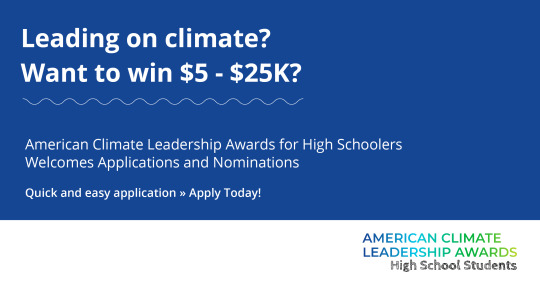
Last call: It's the final week to apply for the American Climate Leadership Awards for High School Students! Apply by Friday, December 15, at midnight PT!
ANNOUNCING: American Climate Leadership Awards has a new category for high school students working towards local climate solutions! @ecoamerica is awarding $125K in cash prizes to student climate leaders. Apply by 12/15: https://ecoamerica.org/american-climate-leadership-awards-high-school-2024/
#ACLA24HighSchoolStudents#ACLA24#high school#high school students#school#education#climate education#environmental education#climate and education#environment and education#climate action#climate and environment#climate#climate and health#climate blog#climate change#climate justice#climate news#weather and climate#environmental news#environment#environmental awareness#environmental activism#environmental justice#environmental#environment protection#environment and health#environmental health
8K notes
·
View notes
Text

List 10 Importance of Geography In the World
#high school#high school students#school#education#climate education#environmental education#climate and education#environment and education#climate action#climate and environment#climate#climate change#climate news#weather and climate#environmental news#environment#environmental awareness#environmental activism#environmental justice#environmental#environment and health#geography#social studies#social science
1 note
·
View note
Text


Enter your information now for a chance to win.
#ACLA24HighSchoolStudents#ACLA24#high school#high school students#school#education#climate education#environmental education#climate and education#environment and education#climate action#climate and environment#climate#climate and health#climate blog#climate change#climate justice#climate news#weather and climate#environmental news#environment#environmental awareness#environmental activism#environmental justice#environmental#environment protection#environment and health#environmental health#shenhe#genshin impact
0 notes
Text
youtube
#Youtube#ACLA24HighSchoolStudents#ACLA24#high school#high school students#school#education#climate education#environmental education#climate and education#environment and education#climate action
0 notes
Text
*tries to organize my thoughts*
*remembers i'm not in school and therefore beholden to neither heaven nor hell nor any man's grading system*
*joyously shredding & tossing all my carefully arranged 3x5 mental notecards into the air like so much beige confetti. raising my arms in victory, cheering raucously until i accidentally inhale bits of homemade confetti*
(*coughing up itty bits of paper like a cat evicting a hairball with a firm understanding of tenants' rights*) wait wat happens next
#i marie kondoed my thoughts and *i* feel great. but now my stream-of-consciousness has escaped containment#so many innocent bystanders at stake#every time i try to organize my thoughts i run out of plastic bins and have to make a trip to the container store where i get even more dis#racted so. you can't just hand me THIS brain and NO catalogue OR library classification system#and expect me to single-handedly sort through all this nonsense? bad form but fucking form not in my job description#aNYways. formal education sure did a FUCKING NUMBER on us huh#(a number i measure not in gpa or dollars of student debt.#but in the number of therapy sessions & medical debt it will take to recover.)#seriously folks. our education systems are...innately traumatizing for a huge number of students. and we NEED to address this.#the fact that it is culturally common for adults to have anxiety nightmares about school/exams...even decades later?#that is not cute. it is Alarming.#no one--much less entire generations--should be spending their developmental years in an environment of chronic stress & pressure & strain#and yet that is the reality for millions and millions of pre-teen and teenage and young adult students#this isn't healthy and it serves and empowers NO ONE#...except of course the many exploitative educational & financial & debt-collecting institutions thriving from the current balance of power#and of course it's a nefarious and powerful way to sabotage/erase the middle class#which billionaires and the wealth-inequality creators they finance couldn't possibly have any noteworthy interest in whatsoever#it's not like there's an elite group of people with huge financial incentives to drain/steal resources from the masses...#anyways sorry for going all Conspiracy Theory on you.#obviously the billionaires who control the vast majority of our resources and news and political campaign funding#are not tied to every single itty bitty social issue and i'm a silly billy to imply it#please tell elon musk to ignore this tweet i am so subservient and acquiescent#mr musky u r so good at inheriting slavery-built mining fortunes & buying other people's companies#& building rocket ships & fancy cars that do NOT explode/catch fire & also NOT running billion dollar companies into the ground#mr musky u r so talented genius billionaire playboy with 10 kids and ex-wives who find you creepy af babe u r basically iron man
2K notes
·
View notes
Text
Wild vs. Feral, Domesticated vs. Tame, Native vs. Invasive, and Why Words Matter
Originally posted on my website at https://rebeccalexa.com/wild-vs-feral/
Recently a post crossed my dash on Facebook featuring a small group of llamas in the forests of the Olympic Peninsula. The caption described them as “wild” llamas (Lama glama). That may seem pretty innocuous to the average person, but to a naturalist it’s a gross mischaracterization. For one thing, llamas are completely domestic animals, no more wild than a cow or dog; they are descended from the guanaco (Lama guanacoe), which is a truly wild camelid. So this means that the llamas on the peninsula are feral, not wild. But why does the distinction of wild vs. feral matter so much?
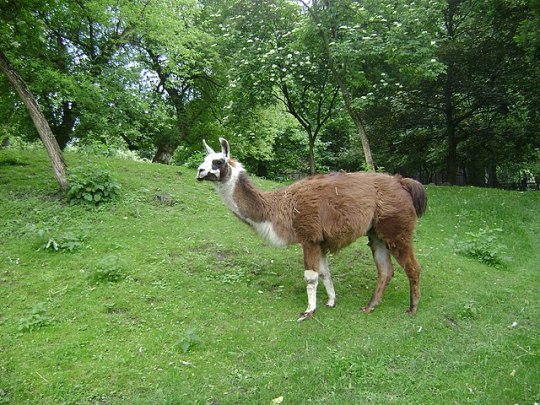
The terms we use to describe various species help us to understand their origin and, perhaps more importantly, their current ecological status. These concepts aren’t just relevant to scientists, however. Everyday people are constantly making decisions that can affect the ecosystems around them, and often these decisions are made without having a full understanding of their impact.
For example, look at how many people release unwanted pets into the wild, whether domesticated rabbits, goldfish, snakes, or other, more exotic animals. Some of these unfortunate animals end up dying pretty awful deaths due to starvation, exposure, or predation. But others manage to survive and reproduce, becoming the latest population of non-native–and potentially invasive–species in their ecosystem. This wouldn’t happen if more people understood the impact of non-native species, and how releasing captive animals puts native species at risk.
But it all starts with knowing that there’s a difference, and understanding the terms that explain why that difference exists. So let’s explore some vocabulary that can be used to describe species, whether animal, plant, or otherwise.
Let’s start with domestication, because there often seems to be confusion as to what makes a species domesticated. Domestication is a process that takes many years, often measured in centuries. Humans breed chosen animals for particular traits over a number of generations. As time passes, each subsequent generation becomes more different from the wild species it originated from, and eventually a new, fully domesticated species emerges from this process of artificial selection by humans.
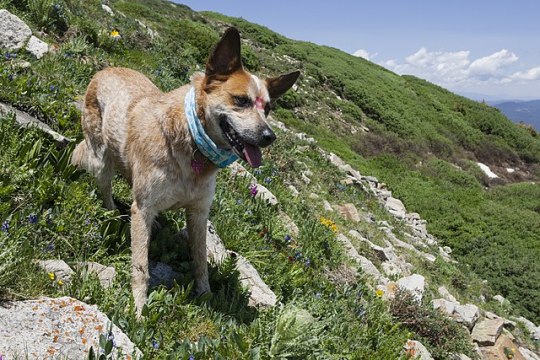
Dogs (Canis familiaris or Canis lupus familiaris) are the first animal humans domesticated in a process that started about 30,000 years ago. They evolved from the now-extinct Pleistocene wolf, a particular lineage of the gray wolf (Canis lupus), and it’s likely that the partnership began as some wolves showed less fear of humans while scavenging from our kills. By 14,000 years ago dogs were a distinct species (or subspecies) from wolves.
Dogs display very different characteristics from wolves. Their faces tend to be shorter with a more pronounced stop (the bump in the forehead where the muzzle meets the rest of the skull.) Floppy ears and curled tails are common, as are patchy-colored coats. Dogs tend to have weaker muscles than wolves of a similar size, shorter legs and smaller feet, smaller teeth, and a smaller size overall. This is a phenomenon known as neoteny, in which domesticated animals have a tendency to retain more juvenile physical traits of their parent wild species, and you can see it in domesticated animals across the board.
But it’s not just physical appearances that matter. Behaviorally dogs are generally more friendly toward humans; in fact, they’ve even developed some human-friendly body language that wolves don’t have, like “puppy dog eyes.” They can be easily trained and, unless poorly socialized, dogs generally enjoy the company of humans.
In many ways, physically and behaviorally, a dog is a wolf that never grew out of its puppy stage. While a young wolf pup may be able to live in someone’s house for a short time, as they grow older they become more destructive and less tolerant of human company. Your dog may love watching out the window during a car ride, but a wolf is going to be much more stressed out by the experience. Even wolf-dog hybrids have to be treated differently than your average domesticated dog because the wolf content has a significant effect on behavior.
This is just one example of how domestication isn’t just a matter of a few generations of selective breeding. You can also compare domesticated horses (Equus ferus caballus) with Przewalski’s horses (Equus ferus przewalskii or Equus przewalskii) or zebras (subgenus Hippotigris), domesticated cows (Bos taurus) with stories of fierce wild aurochs (Bos primigenius), and so forth. In every case the wild and domesticated counterparts are very different in both appearance and behavior.
Now, what about the term “tame”? Many wild animal species have been tamed over the years, either wild-caught individuals or those born in captivity. These tame animals may be more docile in comparison to their fully wild counterparts, but this generally takes a lot of handling and socialization from a young age. Moreover, tame animals retain a lot more wild behaviors than domesticated ones.

Take those supposed “domesticated” foxes that people want to have as pets. Most of the foxes available as pets have no relation to those in the famous Russian fox domestication experiment, but are from modern fur farm lines. And in fact the study foxes came from Russian fur farms, so the researchers were beginning with pre-tamed animals rather than truly wild ones. While some tame foxes may be more amenable to human handling than wild foxes, they are by no means domesticated. They are more prone to wild behaviors like urinating everywhere to mark territory, chewing on anything they can get their jaws on, nipping, and making a LOT of noise. Moreover, whereas dogs adapted to eating an omnivorous diet after millennia of eating alongside us, foxes need a more specialized diet than what you can get at a pet store.
Unfortunately there are unscrupulous people within the exotic pet trade who will advertise their tame (at best) stock as “domesticated.” This often leads consumers to thinking that they’re getting a much more tractable animal that will be as easy to care for as a cat or dog, and sets up everyone involved for disaster (except, of course, the seller with a fatter wallet.)
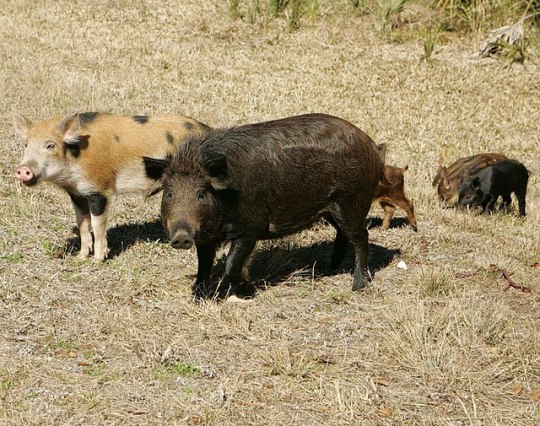
Next, let's compare wild vs. feral. A wild species is one that has never been domesticated, nor have its ancestors. Generally it will be a native species to its ecosystem, though non-native species can also be introduced to an ecosystem without ever having been domesticated. A feral animal, on the other hand, is a member of a domesticated species that has escaped or been released back into the wild and has survived to reproduce new generations that have never been handled by humans.
I’ve often heard people refer to the feral swine (Sus domesticus) that have ravaged ecosystems worldwide as “wild pigs”. They may behave in a wild manner, and they certainly look rougher and hairier than your average well-fed domesticated pig on a farm. It’s not uncommon for feral animals to regain some traits of their wild ancestors. However, that does not make them truly wild.
If you manage to wrest away a litter of newborn piglets from a feral sow and bottle-feed them, they are likely to be able to be socialized and kept in captivity, though they may still physically resemble feral pigs. They haven’t lost the deeply-ingrained genes that carry domesticated traits. However, if you try to raise a newborn Eurasian wild boar (Sus scrofa) or red river hog (Potamochoerus porcus), it will lack the domesticated traits of its farm cousins and show more wild traits as it ages, making it a rather unsuitable pet or farm animal. We also see this return to domestic traits in mustangs and other feral horses captured at a young age. While a mustang born in the wild may be tougher to work with at first than a foal born in captivity and handled from birth, the mustang will be much more calm and easier to train than, say, a zebra.
The problem with referring to feral animals as “wild” is that this suggests they are a natural part of the ecosystem they are in. Because a truly domesticated species (or subspecies) is not the same as the parent species, it has no place to which it is native as a wild animal.

A native species is one that has evolved in a given ecosystem for thousands or even millions of years. In the process it has developed numerous intricate interrelationships with many other species in that ecosystem, creating a careful system of checks and balances. A non-native species is any species that has been taken out of the ecosystem in which it evolved and placed in a different ecosystem where it is not normally found.
For example, here in North America the mourning dove (Zenaida macroura) is a wild native species. While it may resemble domesticated pigeons, it has never been domesticated even when kept in captivity. The Eurasian collared dove (Streptopelia decaocto), on the other hand, was introduced to the Americas after a few dozen individuals were released in the Bahamas in 1974. The feral pigeon (Columba livia domestica) is a domesticated species derived from the rock dove (Columba livia), which is native to Europe, west Asia, and northern Africa. Both the collared dove and pigeon are examples of non-native species. Most non-native species do not offer any benefits to the ecosystems they are introduced to because they do not have established relationships with native species. When they compete with native species for resources, they weaken the ecosystem overall.
Non-native species can be further categorized as naturalized or invasive, or even both. A naturalized species is a non-native one that has managed to establish reproducing populations, rather than going extinct without becoming established. Unfortunately, some people take this to mean that the species has become fully integrated into the new ecosystem. However, this is a process that again takes thousands to millions of years as other species adapt to the newcomer, which itself often also changes as it adapts to its new environment.
Ring-necked pheasants (Phasianus colchicus) are an example of a naturalized species in North America. Native to Asia and parts of Europe, they were introduced here as a game bird 250 years ago. While captive pheasants are regularly released into the wild to offer more hunting opportunities to humans, this species has likely been naturalized from its first introduction.
Again, “naturalized” doesn’t mean “natural”. Pheasants compete with native birds like northern bobwhite (Colinus virginianus) and prairie chickens (Tympanuchus spp.) Not only do they compete for food, nesting sites, and other resources, but they also spread diseases to native birds. Pheasants even engage in brood parasitism, laying their eggs in native birds’ nests and sometimes causing the native birds to abandon the nest and their own young entirely.
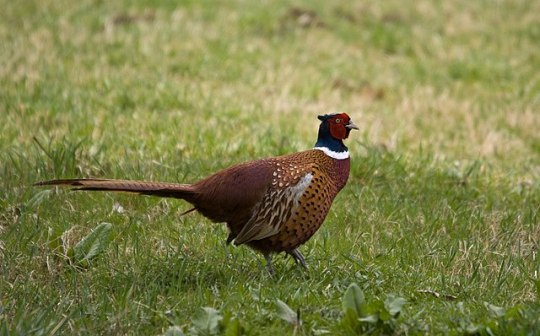
This means that the pheasants are also invasive as well as naturalized. Invasive species are non-natives that aggressively compete with, and sometimes displace or extirpate, native species. There are several hundred species that have become seriously invasive here, including both vertebrate and invertebrate animals, and numerous plants. But even the rest of the over 6000 non-native species that have become naturalized here still put pressure on native species, and have the potential to become invasive if their impact increases to a more damaging point.
Hopefully this gives you a clearer understanding of what these terms mean and why it’s important to know the difference. By knowing a little more about how your local ecosystem works and how different species may be contributing to or detracting from its overall health, you have more power to be able to make decisions that can preserve native species and help ecosystems be more resilient. Given that the removal of invasive species is one of the most important ways we can help ecosystems thrive in spite of climate change, it’s more important than ever that we increase nature literacy among the general populace. Consider this article just one small way to move that effort along.
Did you enjoy this post? Consider taking one of my online foraging and natural history classes or hiring me for a guided nature tour, checking out my other articles, or picking up a paperback or ebook I’ve written! You can even buy me a coffee here!
#wildlife#animals#nature#biology#science#scicomm#invasive species#wild animals#domesticated fox#feral hogs#long post#vocabulary#ecology#educational#biodiversity#conservation#environment#environmentalism#climate change#pigeons
2K notes
·
View notes
Text
can i be fr for a minute?? sending abuse to people online for holding different views than you is not activism and in fact actively hurts your cause. most people are not extreme in their viewpoints, you can give them a new perspective if you're willing to spend some time explaining shit. if someone is saying something you disagree with and you rush in there to condescend to them and call them disgusting and subhuman and dont even TRY to explain calmly why their views are harmful, they're going to shut you out instantly and double down on their views.
most people are simply genuinely ignorant to the issues they're talking about - they just pick their views up from the news and the world around them and express opinions because that's what every person does. if you run in there and tell them they're scum for it, what then? if someone does that to you, are you going to think "maybe i should do some research" or are you going to think "this person is an asshole, im blocking them." a lot of you think you're activists and then refuse to do any kind of actual WORK to support your cause.
#this is not about the isr*el thing even tho thats obviously a huge issue rn#its just a pattern ive observed online#im not saying you have to be kind to people who oppress you dont twist my words#but if youre trying to support any cause and you think calling people names is going to help#youre a fucking idiot lol#people call themelves activists and pro-X cause because they called their opposition dirty c*nts online#how the hell is that meant to help anyone? theyre just going to retreat into their propaganda chambers because you proved what the leaders#of those spaces have been telling them#you can obvs block people if you dont want to deal w them but thats a neutral action. sending abuse harms ur cause.#text#like educating ignorant people is hard work! yeah! its also the entire fucking point of activisim#and if you think its too much effort then just stop pretending you give a shit tbh#like my parents managed to change our neighbour's very xenophobic stance on migrants with a calm conversation#some people will listen and some wont and shes not exactly going out to protests for migrants rights but shes not hostile anymore#and a lot of yall think that isnt good enough but let me tell you it IS good because these things take time!#unlearning things is MUCH harder than learning them in the first place and a lot of people grew up in environments that taught them#very discriminatory and conservative views and its actually not their fault. and its hard to educate yourself differently on something you#have no idea is not true. where do you start w that?
175 notes
·
View notes
Text
Actually research skills are hard to learn especially unsupervised so maybe telling people to just "Go figure it out" especially if you already know they've been failed academically in other ways, might actually be a great way to just send them to a PragerU video on the topic.
#Like what specific things do you look for in a good source?#How do you develop sources that you can trust to give you new information?#These take looking at and analyzing good and bad sources with a trusted educator#Not being told by someone on the internet that you should “Already know this”#“That's no excuse” it literally is I'm sorry that you think everyone should be perfect but that's not how things are#everyone (even you) has shit they probably should know but don't#There's new people being born all the time they do not spring from the womb with the same knowledge in your head!#And we live in an actively hostile information environment!#Just seems like maybe we could focus our rage cannons on institutions#Instead of individual people who were failed by them#When younger americans bring up how they were failed in this regard they are often asking for help even#And just get hit with this stupid rage at someone else possibly not knowing something that seems obvious#I'm just saying for a bunch of people priding themselves on not being as bad as the children; the folks who talk like this aren't acting it
194 notes
·
View notes
Text
just because it could be significantly worse doesn't disregard the fact that it could also be a whole hell of a lot better
#there are so many things i could tag this as#lgbt#lgbtqia#trans#trans rights#economy#environment#fandom#politics#nature#autism awareness#palestine#black lives matter#education#etcetera
66 notes
·
View notes
Text
youtube
Watch the 2024 American Climate Leadership Awards for High School Students now: https://youtu.be/5C-bb9PoRLc
The recording is now available on ecoAmerica's YouTube channel for viewers to be inspired by student climate leaders! Join Aishah-Nyeta Brown & Jerome Foster II and be inspired by student climate leaders as we recognize the High School Student finalists. Watch now to find out which student received the $25,000 grand prize and top recognition!
#ACLA24#ACLA24HighSchoolStudents#youtube#youtube video#climate leaders#climate solutions#climate action#climate and environment#climate#climate change#climate and health#climate blog#climate justice#climate news#weather and climate#environmental news#environment#environmental awareness#environment and health#environmental#environmental issues#environmental education#environmental justice#environmental protection#environmental health#high school students#high school#youth#youth of america#school
6K notes
·
View notes
Text
Am i surprised that privileged white men comment like that on a sexual harassment case? No.
Am I still disappointed about it? Yes.
#lance stroll#f1#valterri bottas#nico hulkenberg#daniel ricciardo#i wished they would take it more serious since it is a serious matter#but that uneducated men we are talking about#nothing will change until they get educated on how it is like to live in environments like f1 as a woman#but the governing body sadly wont do anything since there just as bad
27 notes
·
View notes
Text
Research project 2025. Vote knowing it exists.
#I'm a minor from a different country so I can't do anything except try to educate.#vote democrat#vote republican#democracy#america#vote red#vote trump#vote blue#vote biden#for christ's sake#it is going to decimate the rights of queer people#it is going to destroy the environment agency#it is going to give massive powers to the president#trying to spread this as far as possible with neutral messaging#and many other tags#usa#us#it will do a lot mor#donald trump#joe biden#democrats#republicans#gop#important
21 notes
·
View notes
Note
Don't you find the strict rules of society in Japan overwhelming for you and the kids?
not one bit
#i can’t express how safe i have felt here versus the US over the past several years specifically#no guns… good healthcare… clean environment… good childcare benefits… good food…#no strong religious chokehold permeating society#vaccines and masking aren’t a moral conundrum#functioning public transportation system#functioning postal system#don’t have to worry about people randomly yelling at you#many convenience stores open 24/7#focus on seasonal eating so produce tastes better and you appreciate it more#i can walk the streets at night#in my city all childcare costs and child medical costs are waived up to 3 years old#cost of childbirth fully covered including a week long stay in the hospital after#you can drink the water#early public education has a focus on community and natural science#credit cards are automatically set up to autopay out of your bank account#my company does my taxes for me#did i mention no guns?#i could go on#like i have my philosophical issues with the country for sure but my base needs are covered and that means a lot as a parent
43 notes
·
View notes
Text




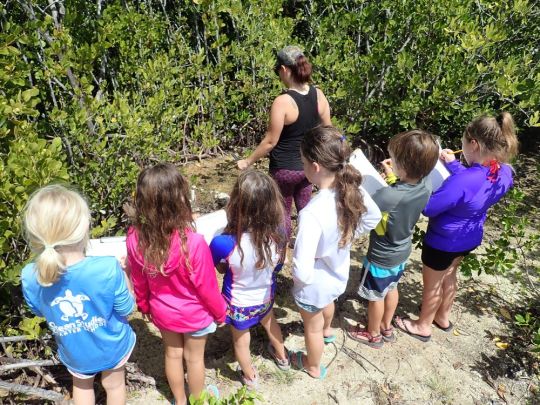
Today, we celebrate Make a Difference Day!
Check out our inspiring Ocean Guardian students engaging in hands-on environmental stewardship projects-
NOAA Ocean Guardian Schools strive to protect and conserve their local watersheds, national marine sanctuaries, and the ocean. Under the program, PreK–12 schools propose and implement a school- or community-based stewardship project, spanning five program pathways: Watershed Restoration, School Garden/Habitat, Energy and Ocean Health, Marine Debris, and 6Rs (Rethink/Reduce/Refuse/Reuse/Recycle/Rot).
Does your school want to make a difference and help protect the ocean and environment for future generations? The 2024–2025 Ocean Guardian School application will be available to download from our website by April 1, 2024. Stay tuned for more updates!
#Stewardship#Environment#Education NOAA Education#ForTeachers#ForStudents#earthisblue#noaa#ocean#nature#science#national marine sanctuary#conservation#make a difference#make a difference day
43 notes
·
View notes
Text

Can't wait for The Everyday Naturalist to be published next year? I have plenty of reading material for you right now! All of these chapbooks I wrote are available for just $6 each for paperbacks, or $3 for ebooks, at https://rebeccalexa.com/chapbooks/
#birds#birding#foraging#mushrooms#mushroom hunting#invasive species#habitat restoration#pollinators#animals#wildlife#climate change#global warming#ecopsychology#environment#environmentalism#conservation#nature#scicomm#ecology#educational
27 notes
·
View notes
Text
#bikes#bike bus#public education#good news#environmentalism#science#environment#automobile alternatives
15 notes
·
View notes